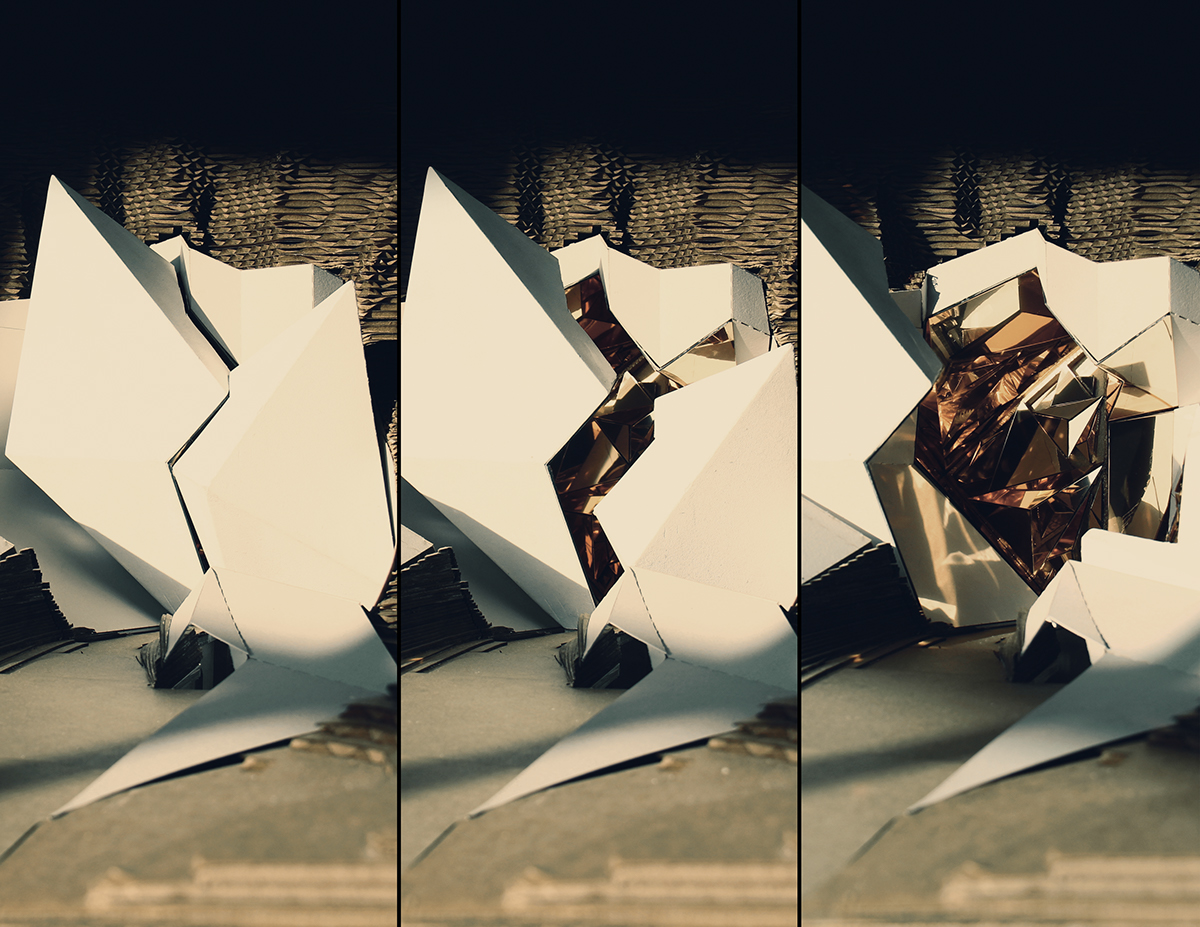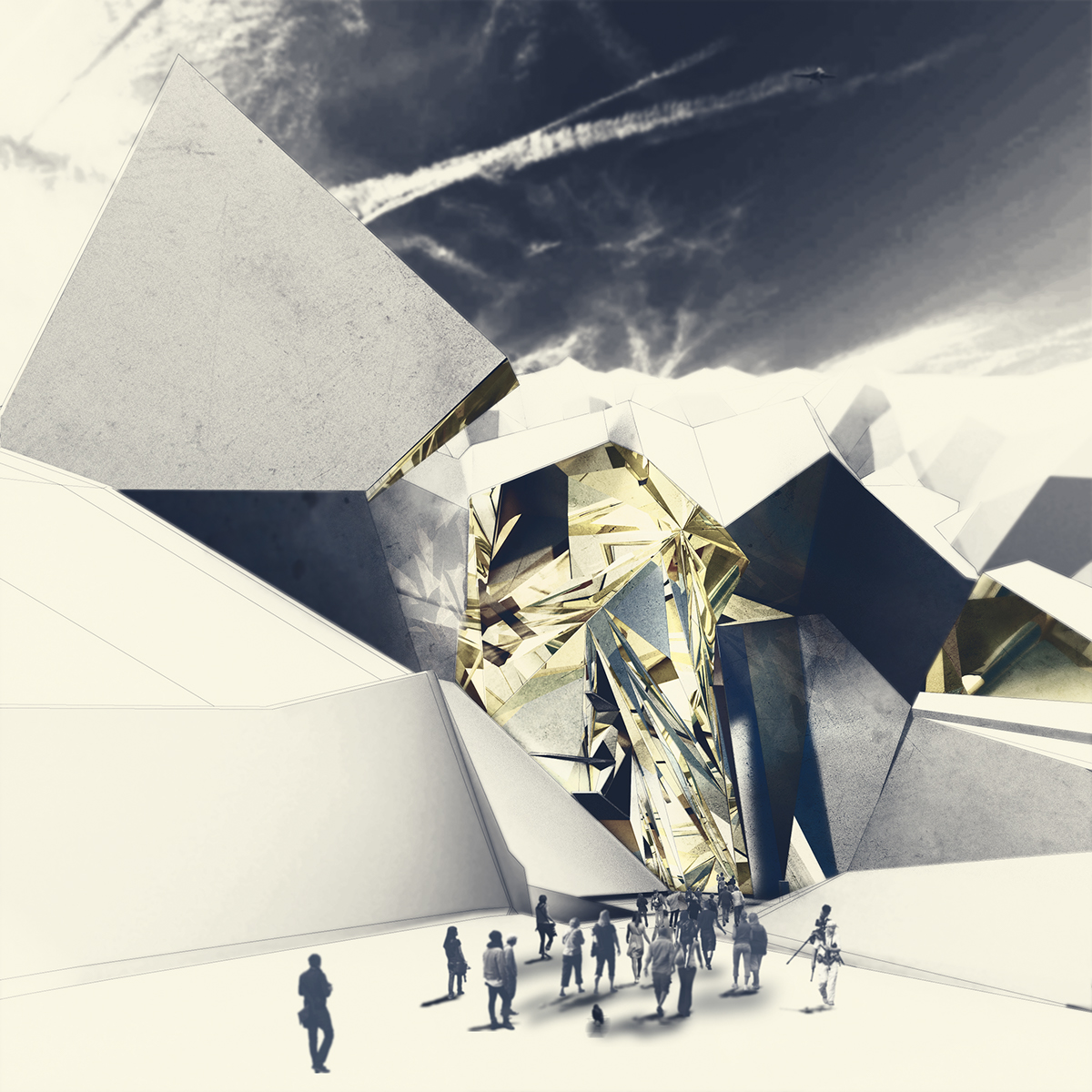
Aiming to concepts of mirroring and motion, this project explores the fickle and whimsical reflections produced by solid volumes. The architectural object evolves through states of concealment and disappearance due to ever changing projections and refractions through the use of mirrored surfaces. With the building reflecting and capturing images of the nearby environment, visual dialogues are created between the open and closed stages. The project challenges the primacy of visual effects and perspective as a form of recognizing and differentiating objects.
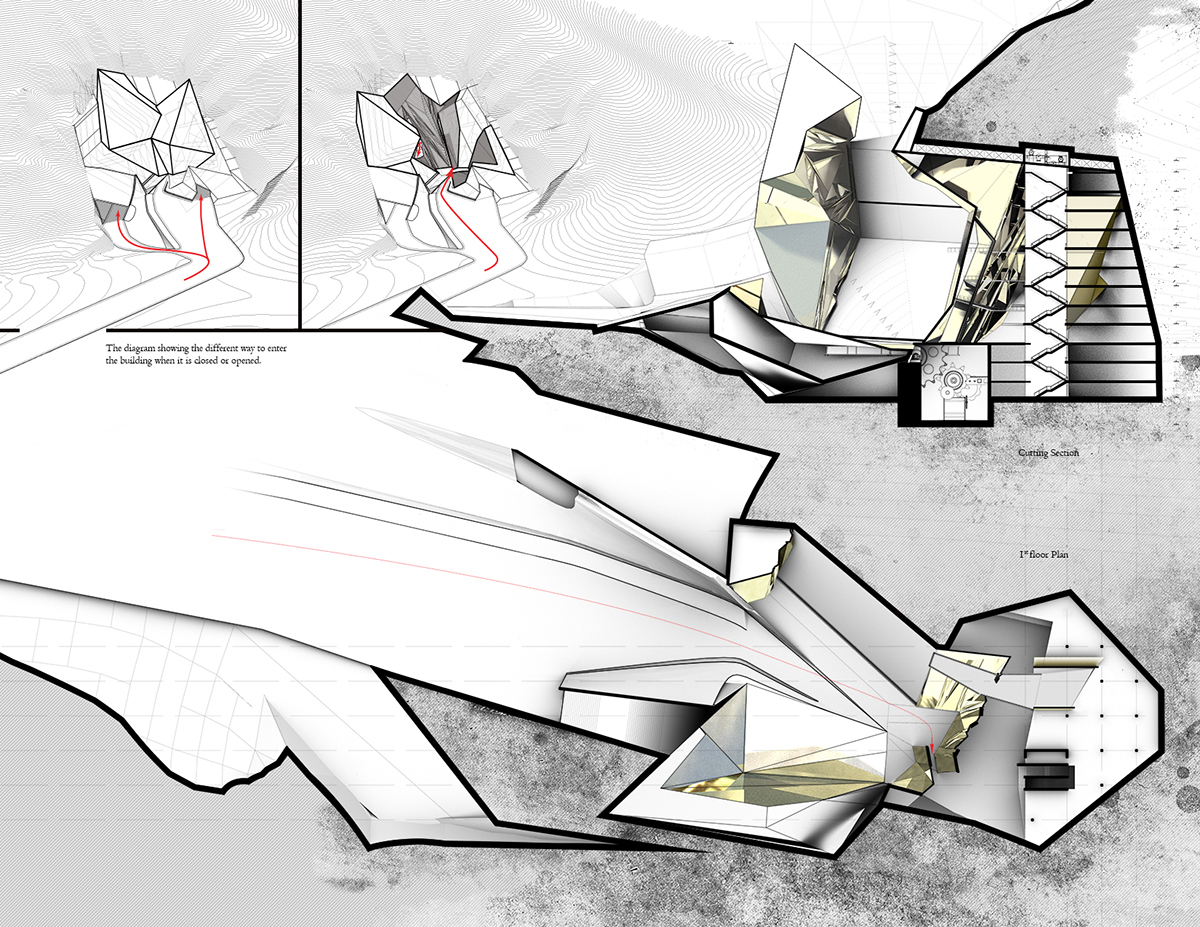
The project is situated in the Mojave Desert, a lifeless, non-urban landscape where the only artificial footprint is represented by the Ivanpah Solar Plan—the largest of its type in the world. The proposal programmatically encompasses an educational and research center, with a focus on energy, intended to emphasize the link between architecture and energy technology, and the emerging phenomena of a high-tech sublime. The concept of the center suggest that sun energy is not only a source of unlimited renewable power, that is essential to life in contemporary urban environments, but actually a force, able to move a mountain.
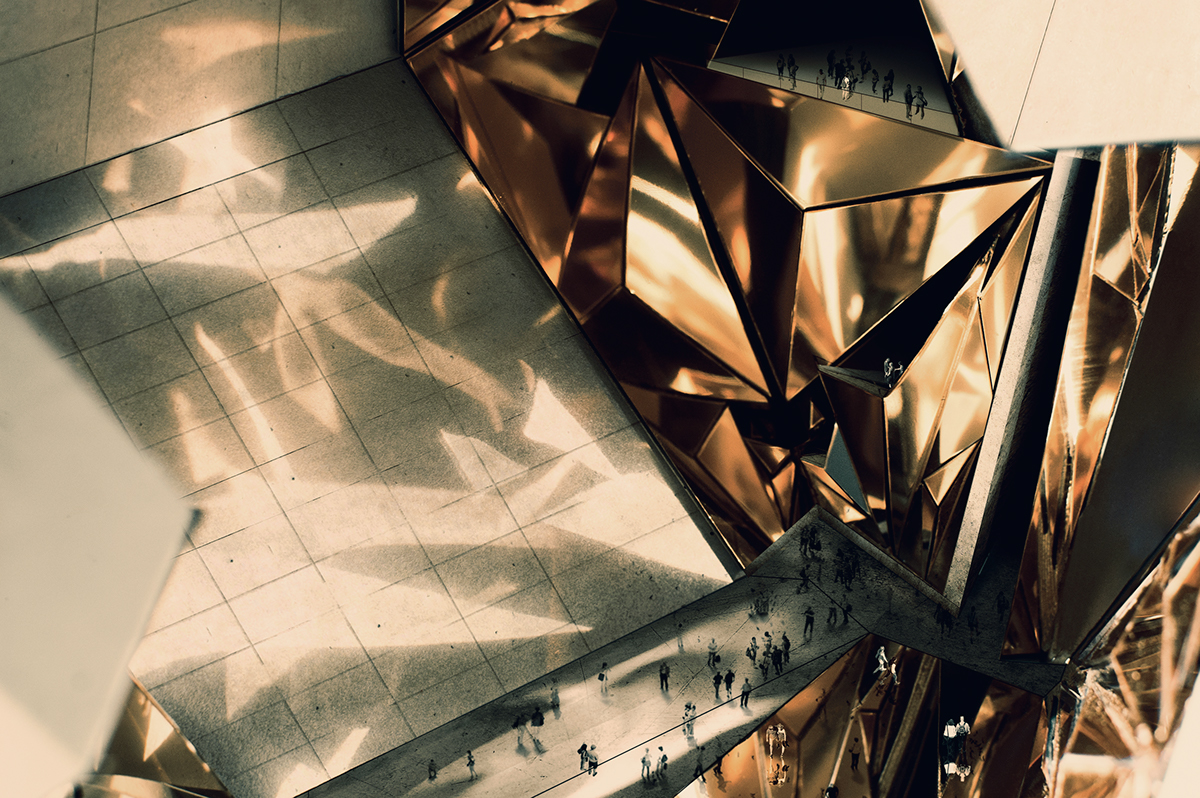
Appearing solid, monolithic crystal-like forms, embedded in the mountain, open up with light, engendering a new object as a result and a new figural space inside the figure. The building, in its closed position, remains static and concealed in its first phase of transition. Beams of light reflect off the solar cells and trigger two parts of building to move, substantially altering its form and its relationship with the surrounding environment. The mirrored surfaces produce a disorienting and yet engaging space in-between reflections and refractions, deconstructing and morphing the building’s mass, continuously challenging and deviating visual perceptions.

Motion diagram
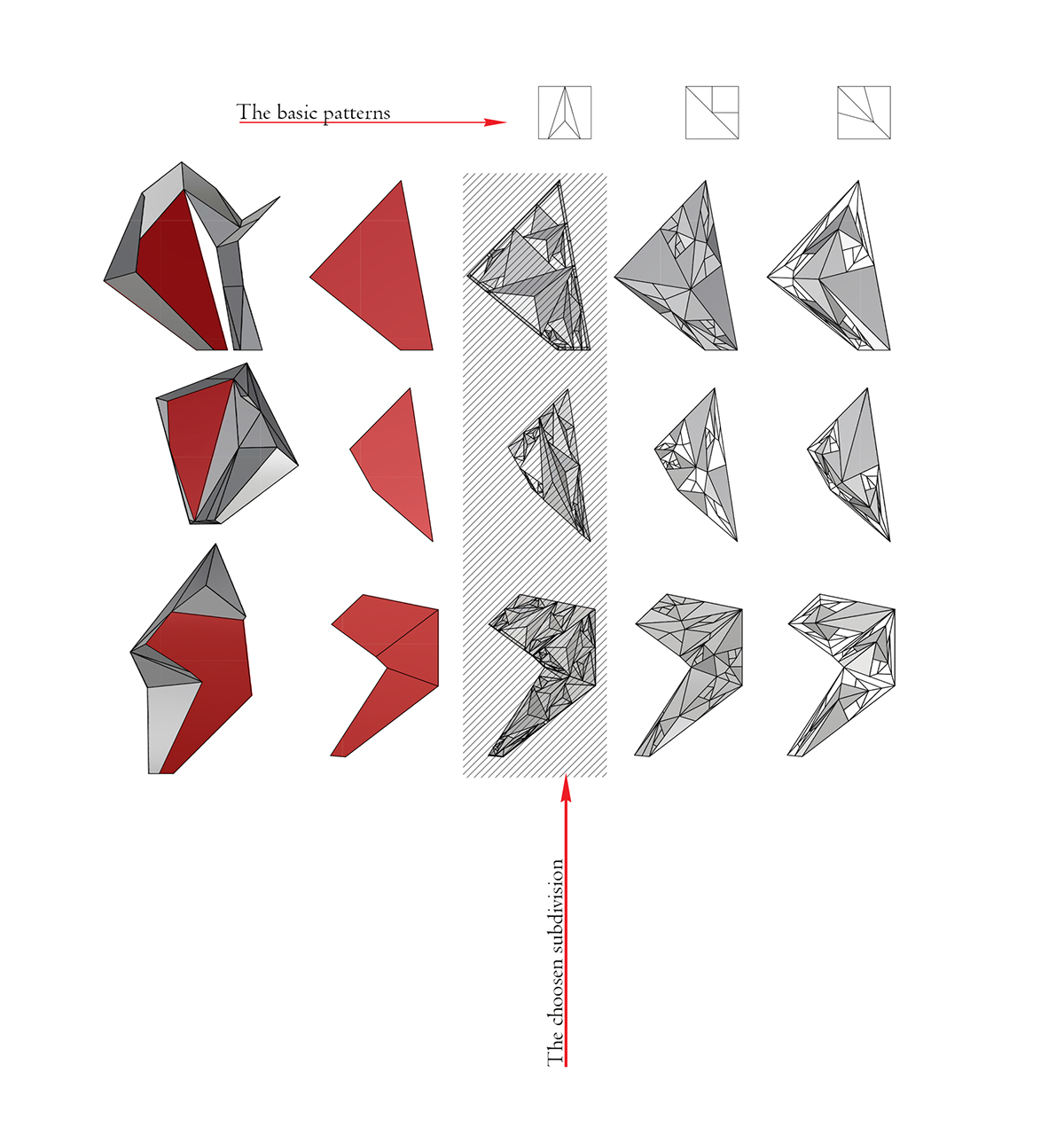


Reflections study

Mirrored facade
